A beginner's guide to the popular blockchains used in NFT development
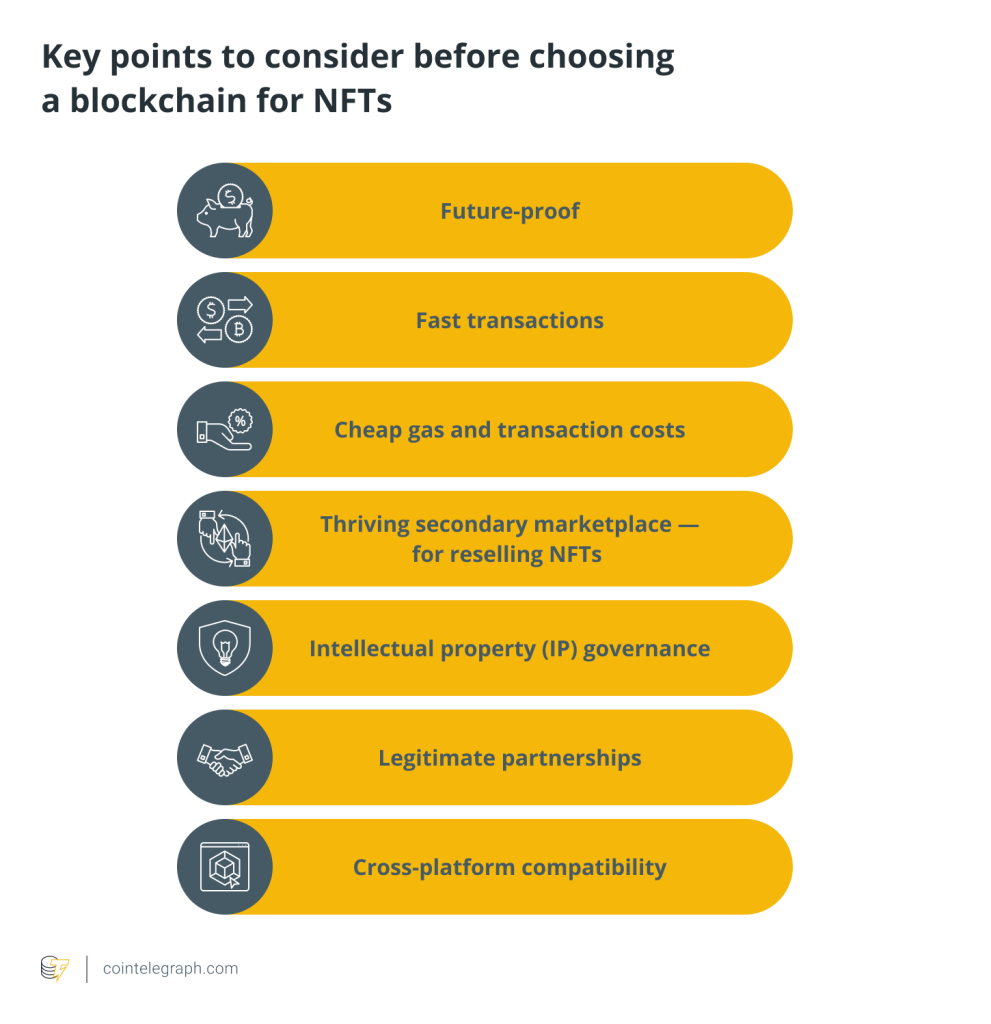

Introduction to nonfungible token blockchains
One of the most popular use cases of blockchain technology, nonfungible tokens (NFTs), are widely used to display and trade ownership of real and digital objects and intellectual property. But how do NFTs work?
What differentiates an NFT from a digital image is the use of metadata that allows NFTs to uniquely represent themselves. Unlike digital images, the metadata in NFTs help to bestow unique properties and identifiers that can be used to represent ownership, rarity and other attributes relevant to present-day digital or physical art and property.
The process of creating NFTs involves uploading this metadata (or a data string linked to this metadata) in the form of a unique cryptographic token over an active blockchain — also known as minting. This article takes us through the various blockchains that support the underlying infrastructure of the NFT ecosystem.
NFT blockchains vs. NFT marketplaces
Without blockchains, NFTs lose their inherent property as immutable, verifiable, unique identifiers. As a result, the NFT has found use cases as a tool to determine and validate the legitimacy of ownership across various sectors including artwork, intellectual property, real estate and a wide range of collectibles.
NFT marketplaces are publicly accessible marketplaces that allow users to mint (create), purchase and sell NFTs. While most NFT blockchains provide their marketplaces, third-party marketplaces are also an option for users who wish to cater to a broader range of audiences.
Let’s talk about some of the top blockchains powering the exciting world of NFTs in the sections below.
Ethereum blockchain for NFTs
The Ethereum blockchain pioneered the concept of NFTs back in 2014. However, with the introduction of the ERC-721 standard, NFTs evolved into a smart contract-based tool, which found financial use cases within gaming, art, tangible assets and music, to name a few.
As the NFT ecosystem took off in 2017, Ethereum introduced ERC-1155 as an official smart contract standard for supporting wide-scale NFT adoption. The older token standards, such as ERC-20 and ERC-721, required the creation of a new smart contract for each type of token. This meant that for each NFT to be transferred, the network would require the creation of a smart contract to correspond with each NFT.
ERC-1155 is a multi-token standard that introduced a smart contract interface purpose-built for transferring multiple token types at once, and as a result, saving on transaction costs. The Ethereum blockchain holds over 90% of the market share in terms of hosting NFTs. However, as a direct result of hosting the majority of NFTs, the Ethereum network has reached its saturation point and demands high gas fees to mint and trade NFTs.
Numerous other blockchains have launched as alternative NFT ecosystems, and in the process, slowly relieve the congestion on the Ethereum network. Moreover, the next iteration of the Ethereum blockchain, Ethereum 2.0, intends to improve the network’s performance and reduce costs by introducing elements such as staking and the merger of the BNB Beacon Chain with the mainnet, among others.
Solana blockchain for NFTs
The Solana (SOL) ecosystem has come out as one of the most promising blockchains to host and trade NFTs. Compared to the NFT market leader Ethereum, the Solana blockchain brings high throughput and low fees to the table.
The Solana blockchain leverages its in-house Metaplex brand umbrella to offer various tools, smart contracts and services related to NFT development. Unlike the Ethereum blockchain, Solano introduces stateless smart contracts while implementing provisions for faster and cheaper transactions. The Solana blockchain uses a combination of proof-of-stake (PoS) along with proof-of-history consensus mechanisms.
One of the main differentiating features of the Solana blockchain is the platform’s promise of censorship resistance and nearly non-existent transaction fees, which attracts NFT artists and traders to the Solana marketplace.
All NFT smart contracts on Solana are stateless, which allows nodes to confirm their validity without needing the storage of local validations. The Solana blockchain also allows third-party accounts to access newly deployed smart contracts and store information. By circumventing this need for internal storage, Solana makes lower transaction costs for NFTs possible.
Polygon blockchain for NFTs
Formerly known as Matic, the Polygon blockchain works as the secondary layer (L2) that sits over the Ethereum mainnet. As a result, the ecosystem enables users and developers to bridge portals and transfer assets from the primary mainnet to Polygon.
The Polygon blockchain serves as a scaling solution that — just like other blockchain alternatives to Ethereum — aims to reduce transaction costs and time significantly. In comparison to Ethereum’s transaction finality speed, which finishes up to six transactions in a minute (10 seconds per transaction), Polygon’s L2 solution boasts a transaction finality of 26.08 transactions per minute (2.3 seconds per transaction).
One of the main reasons why users tend to prefer Polygon over other popular blockchains is that it requires no upfront costs for minting new NFTs. However, the network charges a predetermined amount (usually 2.5%) as a service fee for selling the newly minted NFTs.
Cardano blockchain for NFTs
Cardano (ADA) blockchain is a third-generation PoS blockchain platform, which aims to solve the issues posed by the first, or Bitcoin (BTC), and second, or Ethereum (ETH), generations of platforms.
Minting NFTs on Cardano can be done by either using one of the native third-party services or self-minting using the Cardano node, which provides the user total control over the minted token.
Each transaction on Cardano — including minting, purchasing and selling NFTs — requires a fee, which is currently determined by the size of the file that’s being transacted. As a result, files with lower sizes will incur lower fees than compared with bigger files.
The ecosystem also provides in-house marketplaces for minting and trading NFTs and wallets for storing NFTs and DeFi assets.
BNB Smart Chain (BSC) blockchain for NFTs
The BNB Chain comprises two blockchains — BNB Beacon Chain (previously Binance Chain), which supports staking, voting and other governance initiatives and BNB Smart Chain (BSC) (previously Binance Smart Chain), which powers NFT projects and has other capabilities.
NFTs on the BNB Smart Chain (BSC) are built with their compatibility with other blockchains in mind. Moreover, NFT developers choose BNB as their go-to platform for building an NFT marketplace not only because it's cheaper and faster than the competition but also due to benefits including cross-chain and Ethereum Virtual Machine (EVM) compatibility.
BSC uses Ethereum’s ERC-721 standard for authenticating token ownership. Within a BSC NFT marketplace, investors are allowed to trade digital collectibles using BNB coins and BEP-20 tokens. In addition, BNB smart contracts are usually written in the Solidity programming language.
Tezos blockchain for NFTs
Tezos (XZT) is a PoS blockchain that uses the TZIP-012 standard for storing NFTs on smart contracts, which are often labeled as FA2 contracts. FA2 is an in-house token standard that serves as a unified token contract interface. The Tezos blockchain positions itself as an eco-friendly alternative to the other leading blockchains in the NFT space.
The FA2 standard in Tezos allows users to mint single and multi-token smart contracts while maintaining compatibility with wallet integrators and third-party developers. In the future, the TZIP-012 standard can be upgraded to include backward-compatible support for on-chain views or wrapping. Moreover, all FA2-compliant contracts are required to provide contract-level metadata via Tezos’ TZIP-016 standard.
Tron blockchain for NFTs
The Tron (TRX) network implements the TRC-721 set of standard interfaces for issuing NFTs, which is supported by the TRC-721 and TRC-165 interfaces.
Tron’s implementation of NFT standards aims to improve overall network performance via better traffic management. In addition, Tron-based NFTs maintain full compatibility with Ethereum’s ERC-721 standard.
However, while creating an NFT over Tron, one must also implement a wallet interface for it to accept safe transfers. To issue TRC-721 tokens, one needs to create an account on Tronlink with at least 350 TRX as a minimum balance.
Once NFT is created, users can compile and deploy smart contracts via Tronscan.
The difference between various NFT blockchains
The difference between various blockchains for NFTs is summarized in the table below.

A checklist to determine the best NFT blockchain
Choosing from the many distinct blockchains that support NFTs can be difficult. Fortunately, there are many alternative blockchains to select from, each with its own set of appealing qualities.
However, when it comes to deciding on an NFT project, it all boils down to choosing an ecosystem that comfortably meets most of the requirements including:

Finding a blockchain that meets the above seven requirements will be foundational to the success of every NFT project. The more you miss on the checklist, the lower the probability of the project’s long-term success.
Take the leap and check out Cointelegraph’s detailed guide on creating NFTs.

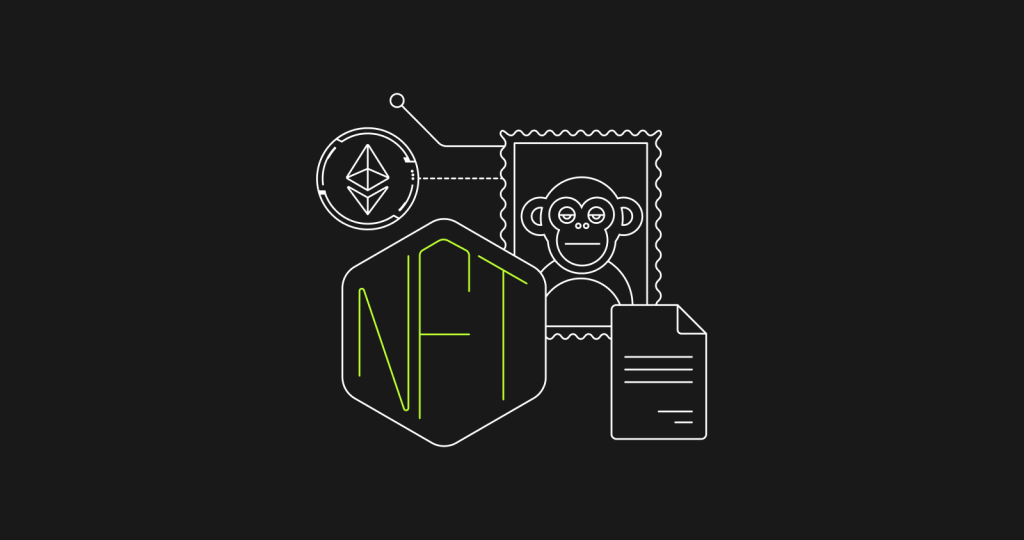
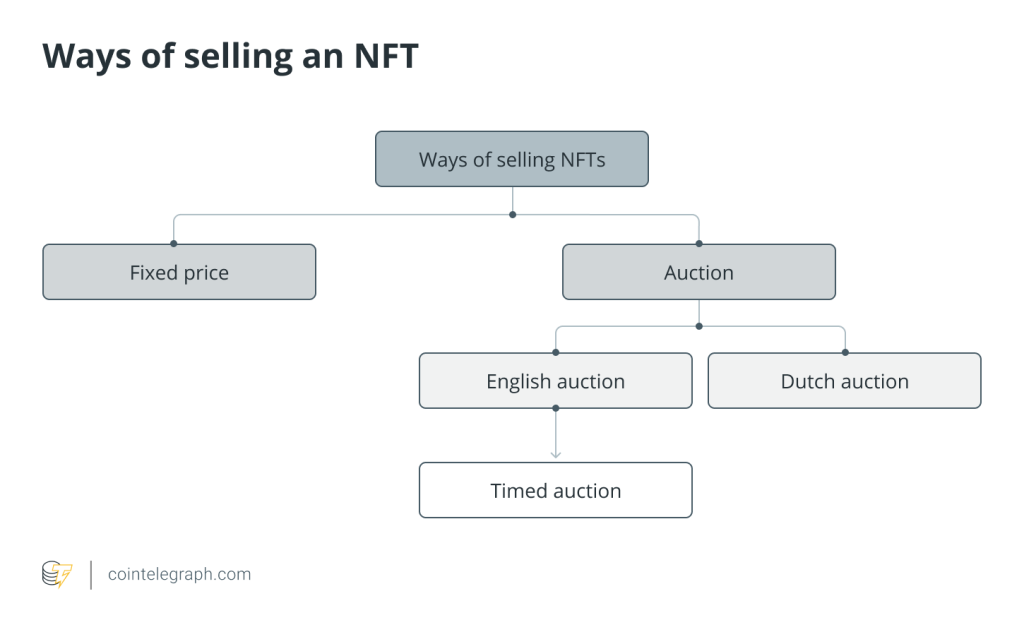
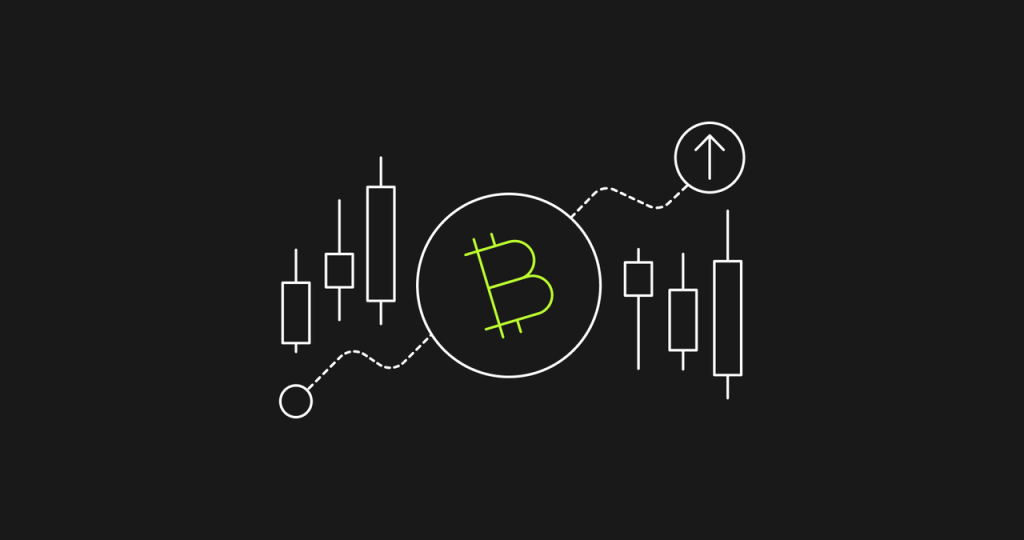
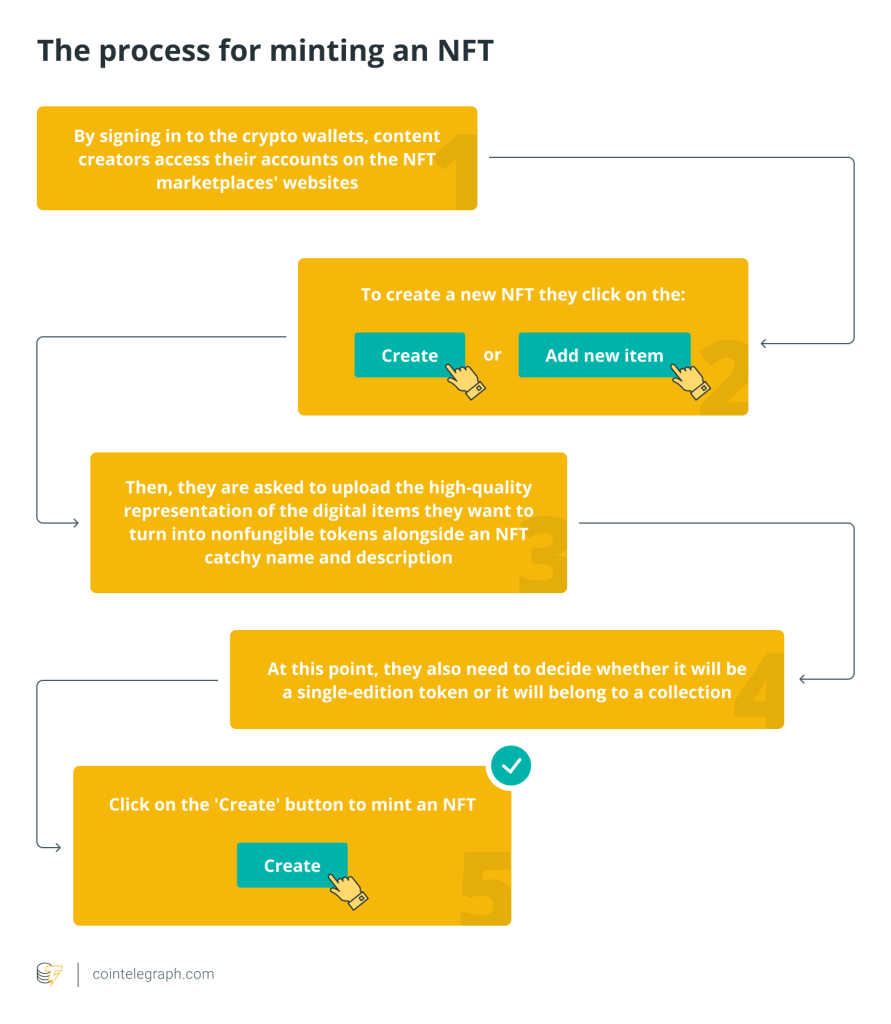

… [Trackback]
[…] Find More Information here to that Topic: x.superex.com/academys/beginner/2709/ […]
… [Trackback]
[…] Read More Information here on that Topic: x.superex.com/academys/beginner/2709/ […]
… [Trackback]
[…] Find More Info here on that Topic: x.superex.com/academys/beginner/2709/ […]
… [Trackback]
[…] Here you can find 23103 more Info to that Topic: x.superex.com/academys/beginner/2709/ […]
… [Trackback]
[…] Find More on that Topic: x.superex.com/academys/beginner/2709/ […]
… [Trackback]
[…] Read More to that Topic: x.superex.com/academys/beginner/2709/ […]
… [Trackback]
[…] Find More Information here on that Topic: x.superex.com/academys/beginner/2709/ […]
… [Trackback]
[…] Read More Information here to that Topic: x.superex.com/academys/beginner/2709/ […]
… [Trackback]
[…] Information on that Topic: x.superex.com/academys/beginner/2709/ […]
… [Trackback]
[…] Here you can find 35299 more Information to that Topic: x.superex.com/academys/beginner/2709/ […]
… [Trackback]
[…] Here you will find 43287 more Info to that Topic: x.superex.com/academys/beginner/2709/ […]
… [Trackback]
[…] Find More here on that Topic: x.superex.com/academys/beginner/2709/ […]
… [Trackback]
[…] Here you can find 52017 more Info on that Topic: x.superex.com/academys/beginner/2709/ […]
… [Trackback]
[…] Read More Information here to that Topic: x.superex.com/academys/beginner/2709/ […]
… [Trackback]
[…] Info to that Topic: x.superex.com/academys/beginner/2709/ […]
… [Trackback]
[…] Read More Info here on that Topic: x.superex.com/academys/beginner/2709/ […]
… [Trackback]
[…] Information to that Topic: x.superex.com/academys/beginner/2709/ […]
… [Trackback]
[…] Read More on that Topic: x.superex.com/academys/beginner/2709/ […]
… [Trackback]
[…] Here you can find 87327 additional Info to that Topic: x.superex.com/academys/beginner/2709/ […]
… [Trackback]
[…] Here you will find 41682 more Information to that Topic: x.superex.com/academys/beginner/2709/ […]
… [Trackback]
[…] Find More on that Topic: x.superex.com/academys/beginner/2709/ […]
… [Trackback]
[…] Information on that Topic: x.superex.com/academys/beginner/2709/ […]